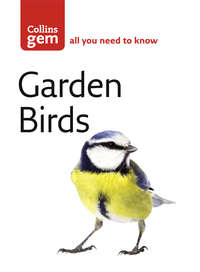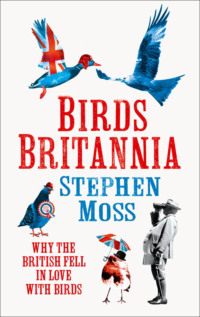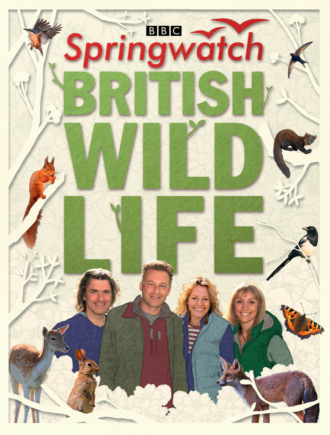
Полная версия
Springwatch British Wildlife: Accompanies the BBC 2 TV series

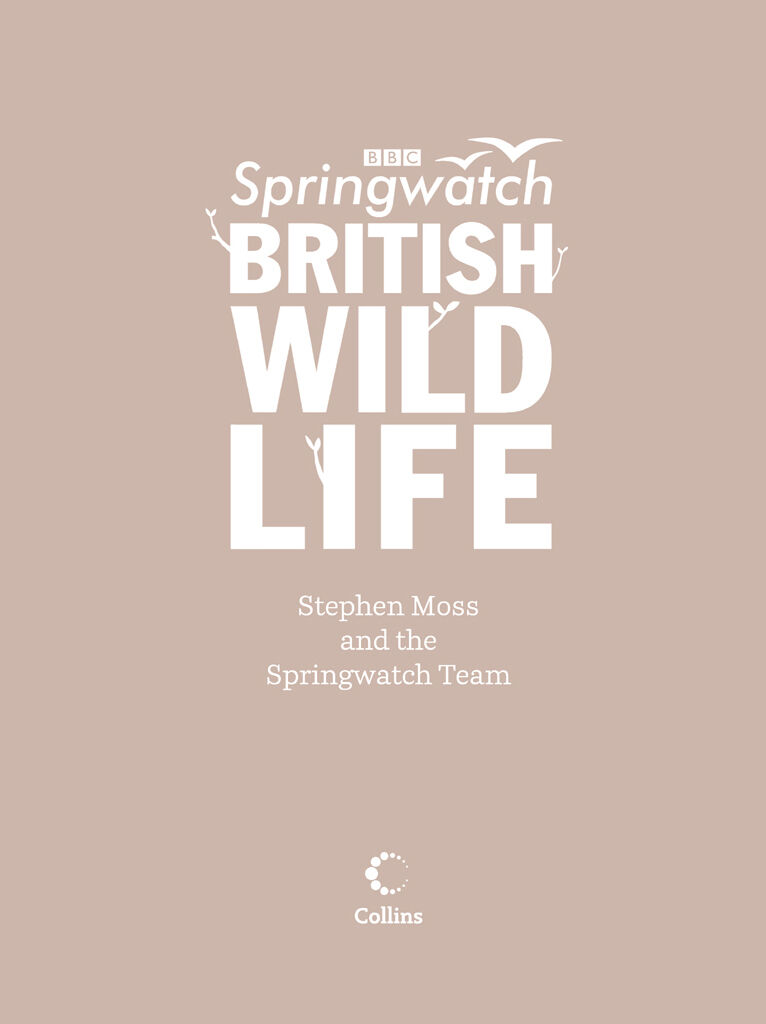
To Britain’s wonderful wildlife, for giving so much pleasure to so many people.
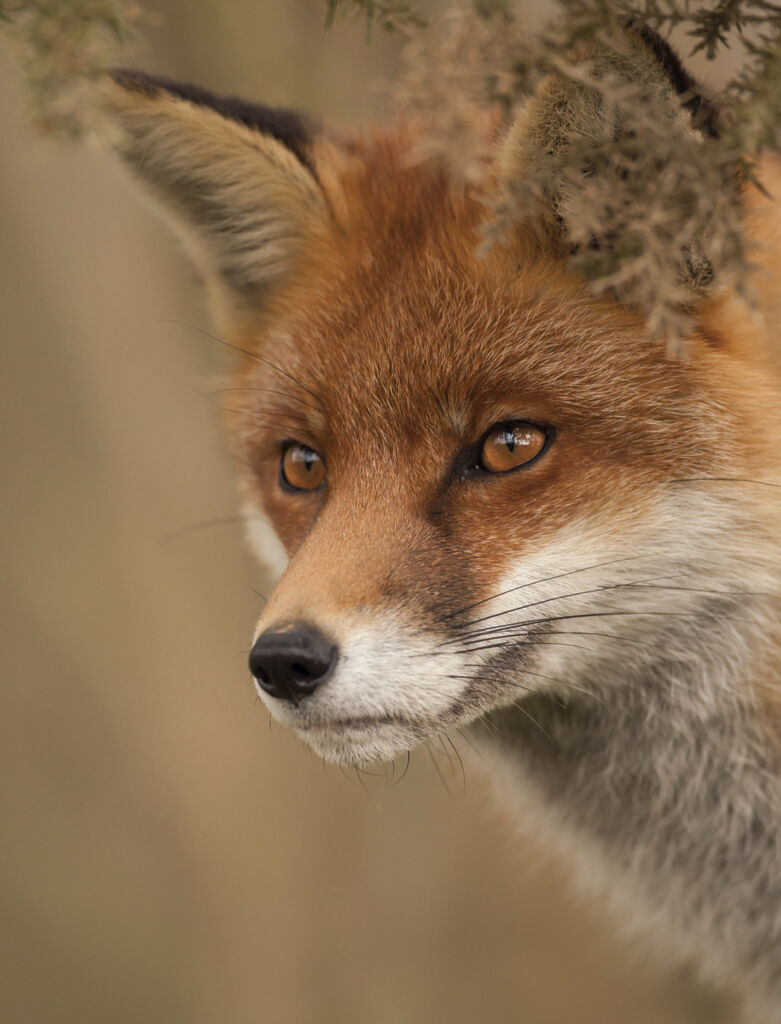
©Simon Litten/FLPA
Contents
Cover
Title Page
Dedication
Introduction
Birds
Tits
Finches
Buntings
Blackbird, Song Thrush & Mistle Thrush
Winter Thrushes & Waxwing
Black Crows
Magpie & Jay
Woodpeckers
Nuthatch & Treecreeper
Sparrows
Wagtails
Wren
Robin
Starling
Swift, Swallow & Martins
The Oakwood Trio
Warblers
Owls
Barn Owl
Pigeons & Doves
Cuckoo & Nightjar
Skylark
Pheasant & Partridges
Grouse
Small Falcons & Sparrowhawk
Peregrine
Buzzards & Harriers
Eagles
Osprey
Red Kite
Auks
Puffin
Gulls
Terns
Skuas
Ringed & Little Ringed Plovers
Lapwing
Small & medium-sized Waders
Large Waders
Oystercatcher & Avocet
Rails
Dabbling Ducks
Diving Ducks
Geese
Swans
Pelagic Seabirds
Gannet, Cormorant & Shag
Herons & Egrets
Kingfisher & Dipper
Grebes & Divers
Mammals
Fox
Badger
Otter
Seals
Deer
Rabbit & Hares
Stoat & Weasel
Bats
Small Mammals
Water Vole
Dormouse
Harvest Mouse
Hedgehog
Pine Marten & Polecat
Red & Grey Squirrels
Mole
Whales & Dolphins
Insects & other Invertebrates
Butterflies
Moths
Dragonflies & Damselflies
Crickets & Grasshoppers
Beetles
Bees & Wasps
Ants
Spiders
Woodlice, Slugs & Snails
Rockpool Life
Reptiles, Amphibians & Fish
Snakes
Lizards
Newts
Frogs & Toads
Freshwater Fish
Salmon & Trout
Sharks
Plants & Flowers
Deciduous Trees
Coniferous Trees
Orchids
Hedgerow Flowers & Plants
Woodland Flowers
Meadow Flowers
Marsh Plants & Flowers
Moorland & Heathland Plants
Urban & Roadside Plants
Grasses, Sedges & Rushes
Berry-bearing Plants
Carnivorous Plants
Ferns, Mosses and Lichens
Fungi
List of Searchable Terms
Acknowledgements
Copyright
About the Publisher
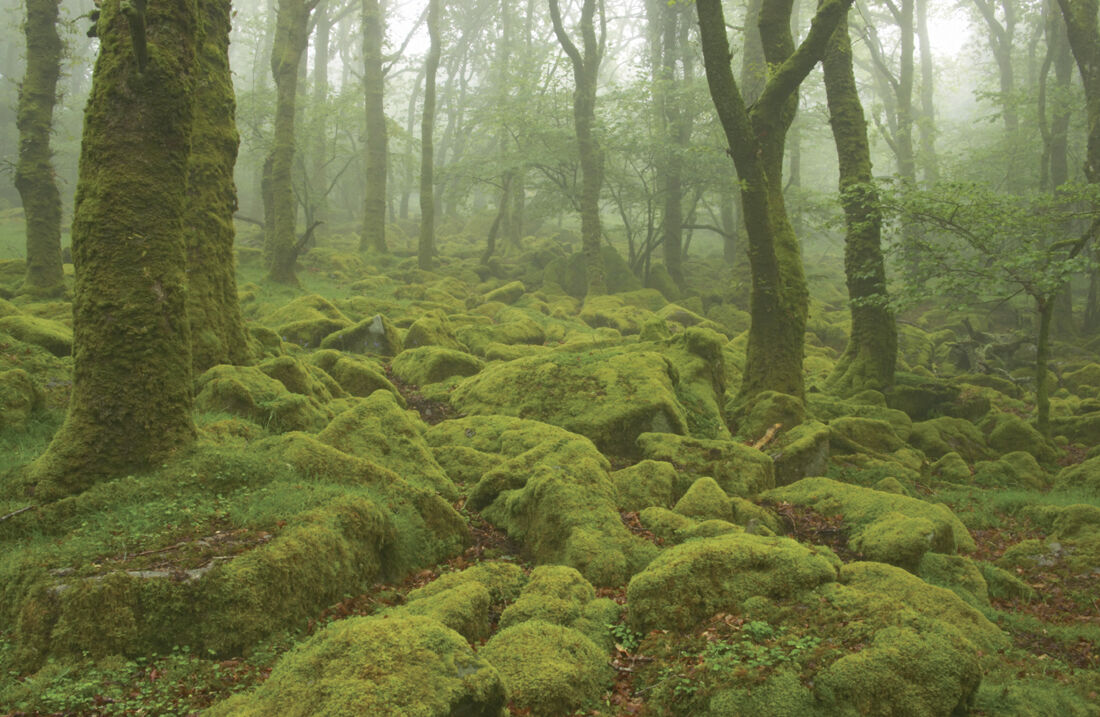
©Bill Coster/FLPA
Introduction
Like the monarchy, afternoon tea and the weather, Springwatch is a British institution. Of course it didn’t start that way: in fact, when it began, back in 2003, it wasn’t called Springwatch at all. Wild in Your Garden was a week of live TV programmes broadcast from a suburb of Bristol, presented by Bill Oddie, Kate Humble and Simon King. The following year it moved to Devon, was extended to three weeks, and turned into Britain Goes Wild. It wasn’t until 2005 that it finally acquired the name Springwatch.
Since then, it has changed location twice (to Pensthorpe in Norfolk and Ynys-Hir in mid-Wales), spawned numerous spin-offs, including Autumnwatch, Snow Watch and Winter Watch, and acquired a whole range of new presenters including Chris Packham, Martin Hughes-Games and Michaela Strachan. It has also become as fixed a part of the TV schedules as EastEnders and Top Gear.
The success of all these shows, and the various website content, campaigns and events surrounding them, is reflected in the fact that the British have rediscovered their age-old passion for wildlife. Actually it was always there, it was just that for a long time those in charge of the TV schedules preferred their wildlife to be foreign and exotic – lions and elephants rather than badgers and blue tits. Springwatch has shown that there is a real appetite not just for watching wildlife on our doorstep, but for learning about it, too.
That is what the Springwatch Guide to British Wildlife is all about. It is designed to help you learn more about the wildlife featured in the programmes: from the common and familiar species such as blackbirds and blue tits, through the more obscure examples such as natterjack toads and rare orchids, to iconic creatures such as the killer whale and white-tailed eagle. Each creature or group of plants or animals gets its own illustrated double-page spread, featuring fascinating facts and details of their lives.
Of course this can only scratch the surface: there are plenty of specialised guides available to every group of Britain’s wild creatures. But once you are hooked, it will hopefully inspire you to learn more about the wildlife we treasure so much.
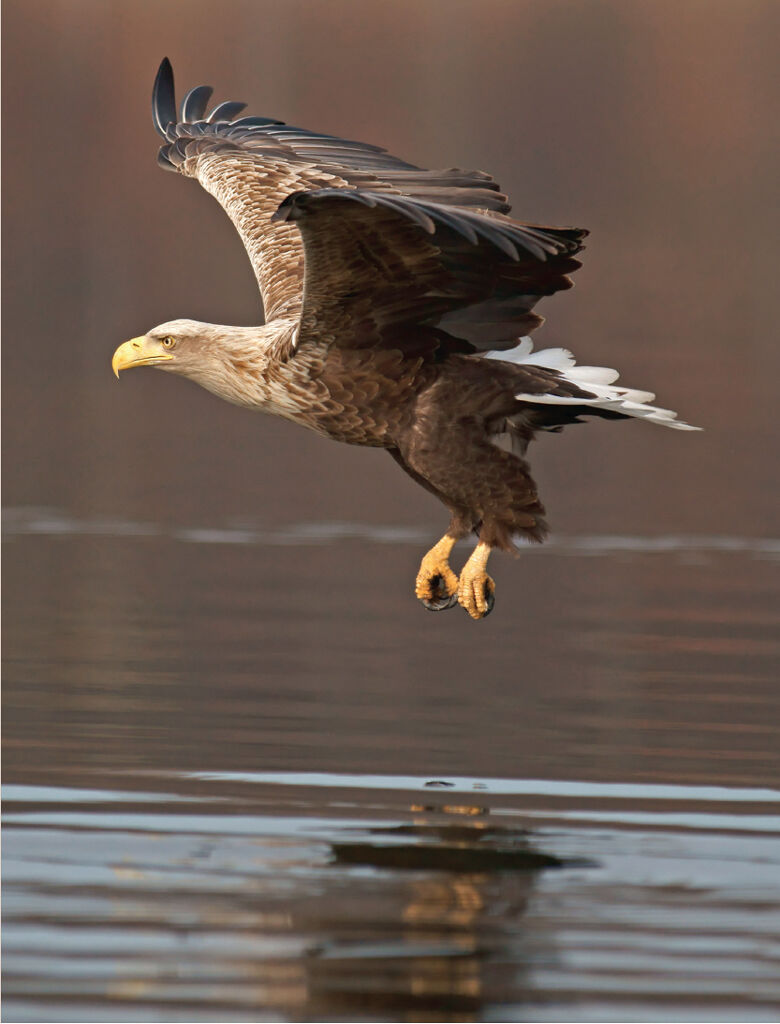
©Marko König/Imagebroker/FLPA
The white-tailed eagle (also known as the sea eagle) is Britain’s largest bird of prey, with a wingspan of over 2m (6ft).
Birds
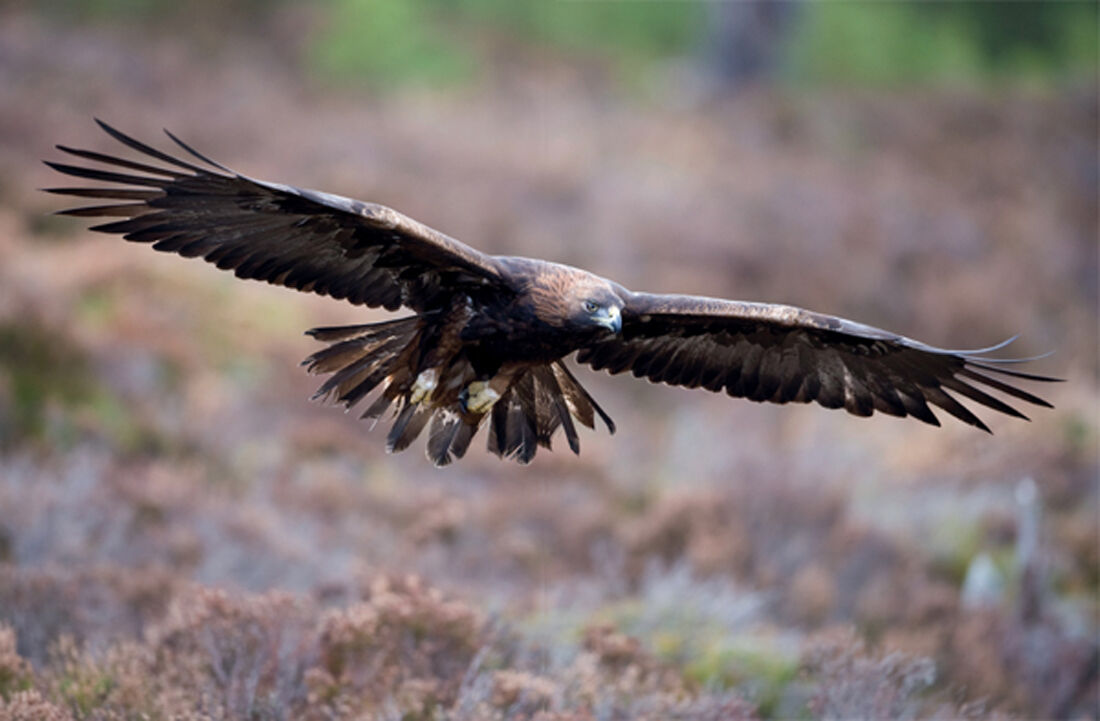
©Horst Jegen/Imagebroker/FLPA
Tits

©Paul Hobson/FLPA
©Herbert Kehrer/Imagebroker/FLPAp
Blue tits and great tits are originally woodland birds, which have readily adapted to life in our gardens.
Of all the stars of Springwatch, perhaps none is quite so enduringly popular as the blue and great tits. Their antics, as they jostle for position on feeders, their cheeky behaviour and, above all, their life-or-death struggles as they bring up a brood of chicks under the glare of TV cameras, make them utterly compelling to millions of viewers.
There is one simple reason why these birds have become such stars: they choose to nest in bird boxes, which means that from the earliest days of live TV broadcasts – certainly as far back as the early 1990s and Bird in the Nest – it was possible to put cameras into their nests. Things have changed a lot since then, of course: instead of huge cameras, we now have a battery of tiny high-definition cameras that can view the nesting birds at all angles, without causing them a moment’s disturbance.
The reason tits take so readily to nest boxes is that these artificial homes are an ideal substitute for the natural holes and crevices in which these birds nest. For, like so many of our garden birds, tits are originally birds of the woodland or woodland edge. They have made their homes in our gardens primarily because we provide plenty of food for them – not just in the shape of seeds and peanuts but also through what we plant, which provides much-needed moth caterpillars for their hungry broods.
And broods don’t get much hungrier than a dozen baby blue tits, all crammed into their soft, cup-shaped nest of moss and feathers, inside a tiny wooden box. During the dozen or so days between the chicks hatching and when they finally fledge and leave the nest, a single brood may require as many as 12,000 caterpillars – that’s 1,000 caterpillars per day, or roughly one caterpillar every two minutes for each of the two parents. No wonder the adult birds look so tatty and exhausted by the end of the breeding season!
Blue and great tits are the two species we often feature on Springwatch, along with occasional appearances by a third garden species, the coal tit. These three are easy to tell apart: the great tit, as its name suggests, is larger than the other two, and has a smart black and yellow plumage with a green back, white cheeks and a thick black strip down its front. Blue tits are smaller, mainly blue and yellow, and also with white cheeks (though the youngsters have yellow cheeks). Coal tits are basically a monochrome version of the blue tit – similar in size, with, a black, brown and grey plumage and a distinctive white patch on the back of the neck, or nape.
Three other kinds of tit breed in Britain, two of which, the marsh and willow, are so similar that they weren’t separated as different species in Britain until the last year of the nineteenth century. Both are superficially similar to the coal tit, being mainly brown with a black cap, but they are both larger and less varied in plumage, and lack the coal tit’s white nape. Sadly, both marsh and willow tits have suffered major declines in recent years, perhaps due to a loss of suitable breeding habitat.
The final species, the crested tit, is found only in the ancient pine forests of Speyside in Scotland, and can easily be identified by its perky crest. Two other species with ‘tit’ in their name, the long-tailed tit and the bearded tit, are in fact unrelated to the tits, though long-tailed tits do often accompany flocks of tits in winter.
Unlike many other nesting birds featured on Springwatch, both blue and great tits usually have only one brood of chicks in a season. As they generally live for only a year or two as adults, this is a risky strategy: literally putting all their eggs in one basket. In years when spring comes very early, as in 2007 and 2011, this can mean that by the time the birds begin to nest, the moth caterpillars on which they so depend are already coming to the end of their lifecycle and beginning to pupate, which can mean very bad years for the birds. It remains to be seen whether these species are bringing their own breeding season significantly earlier to cope with this change. Evidence suggests that they probably are.
Once their chicks are safely out of the nest and have fledged, adult tits appear to vanish for a month or so; they are moulting into a bright new plumage and hide away to avoid predators. By autumn, they appear again, teaming up with those of the same and other species in mixed flocks, which rove woodlands or gardens, uttering the tiny, high-pitched contact calls that draw our attention to them. They travel in circuits in search of food; it has been calculated that if you see half a dozen blue tits coming to your feeder during the course of a winter’s day, you may in fact play host to as many as ten times that number. So make sure you keep your feeders clean and well stocked with food!
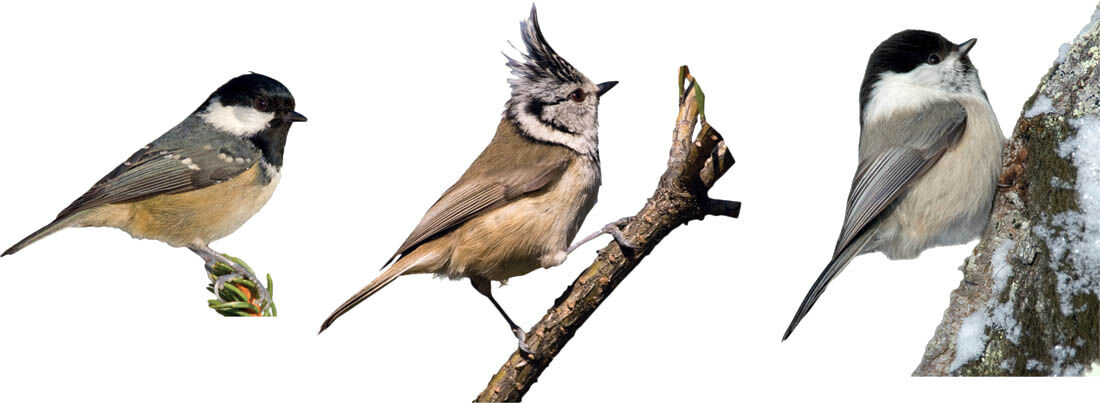
©FranzChristophRobi/Imagebroker/FLPA
©Konrad Wothe/Minden Pictures/FLPA
©Franz Christoph Robi/Imagebroker/FLPA
Tits such as coal, crested and willow use their sharp, pointed bills to feed on a range of insects and seeds.
Finches
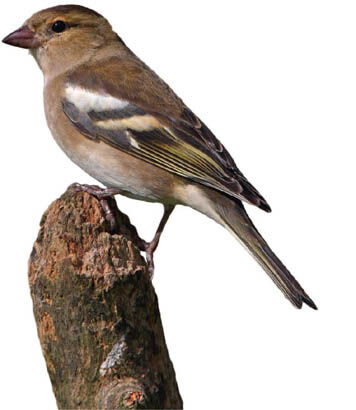
©Neil Bowman/FLPA
The chaffinch is our commonest finch, found in a wide range of wooded and garden habitats.
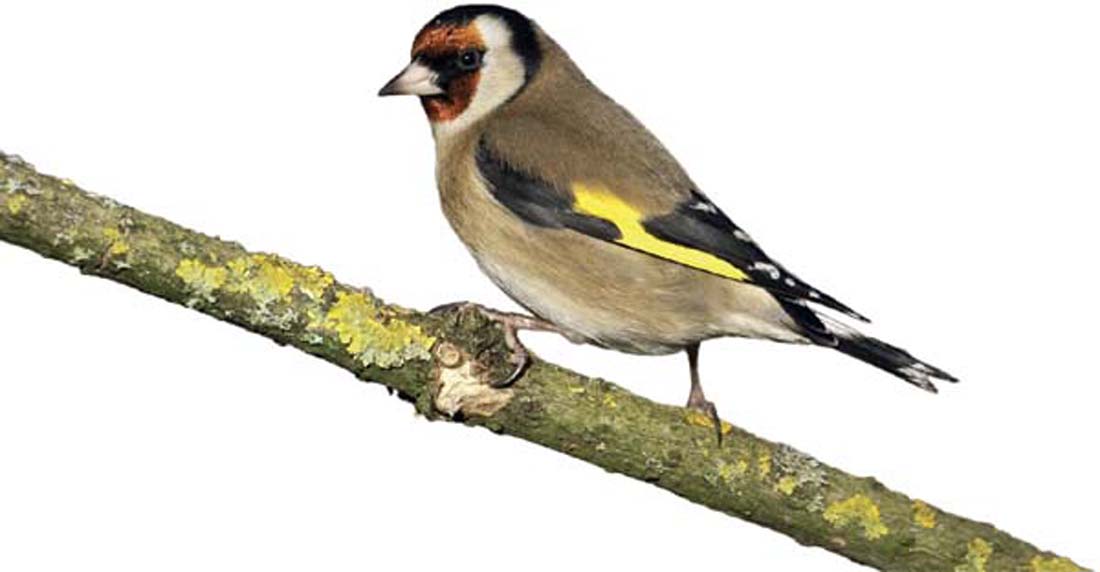
©Hugh Clark/FLPA
The goldfinch is currently on the increase, thanks partly to our habit of feeding birds in our gardens.
Of all our birds, there could hardly be a more colourful, attractive and better-known family than our finches. The dozen or so species of finch that regularly breed in Britain include some of our most familiar garden birds – the chaffinch, goldfinch and greenfinch – as well as some scarce and elusive ones such as the hawfinch and crossbill. Other species include the siskin and redpoll, which are growing in familiarity and now visit gardens more than they did in the past, and sadly declining species such as the bullfinch, linnet and twite.
Finches are seed-eaters, which means they have taken well to hanging feeders and bird tables containing either seeds or peanuts. Each species has subtly different food requirements, often leading to different-shaped bills. So, whereas the goldfinch has a slender, pointed bill, which it uses to extract the tiny seeds from thistles and teasels (and to take nyjer seed from garden feeders), the bullfinch has a much thicker, sturdier bill, which it uses to feed on buds. The hawfinch – the biggest British finch – sports a massive bill, which it uses to crack cherry stones, applying a pressure of more than two tons per square inch!
But of all the finches, by far the most bizarre feeding adaptation comes in the crossbills, whose various species have uniquely developed crossed mandibles: one half of their bill crosses over the other, enabling the birds to extract the seeds from pine cones and the fruits of other coniferous trees. Because they don’t depend on insects or fruit to feed their young, they nest remarkably early – sometimes beginning at the start of the new year. The crossbills are our only nomadic breeding bird, with flocks shifting around the country (and occasionally disappearing across the North Sea to Scandinavia) from year to year.
The group also includes Britain’s only endemic breeding bird, the Scottish crossbill, which is confined to a tiny area of the Caledonian pine forests of northeast Scotland.
Our commonest finch by far is the chaffinch, which, with more than five-and-a-half million breeding pairs, is second only to the wren as Britain’s commonest breeding bird. Chaffinches are found throughout the UK but are especially common in Scottish woodlands, where vast flocks gather to feed in winter. But, like other woodland birds, they have adapted well to living alongside us in our gardens.
Two other species – the greenfinch and the goldfinch – are even more dependent on garden bird-feeding; indeed, the goldfinch population has risen dramatically in the past couple of decades thanks to us providing high-energy food such as sunflower hearts. Today, the tinkling sound of a goldfinch flock can be heard in many gardens. Siskins – a streaky, smaller version of the greenfinch – have also learned to take advantage of our generosity, and have spread southwards from Scotland to southern England as a result.
One problem, though, has come with this success. Being sociable birds, often coming to gardens in flocks, finches are especially susceptible to disease, with greenfinches being hit particularly hard. It can be distressing to find dead birds underneath your feeders, so make sure you clean them thoroughly, and remove any mouldy food.
Some kinds of finch hardly ever come to gardens, and they are perhaps suffering as a result. Linnet and twite – two small, streaky finches with subtly beautiful plumage features – have both declined dramatically, and are now on the Red List of birds of conservation concern. Linnets are farmland birds, and changes in agricultural practices, such as the sowing of winter wheat, which has reduced the amount of stubble available for the birds to feed on in winter, have contributed to their decline. The decline of the twite is, in some ways, even more worrying; this moorland bird has virtually disappeared from northern England and now lives mainly in Scotland.
Finches build their open, cup-shaped nests hidden away in bushes, trees and shrubs. They mostly lay between four and six eggs, and usually raise two or even three broods of chicks during a single breeding season.

©Erica Olsen/FLPA
©Photo Researchers/FLPA
©John Hawkins/FLPA
©Paul Hobson/FLPA
All finches, including greenfinch, bullfinch, crossbill and siskin, have developed specially shaped bills to suit their favoured foods.
Buntings
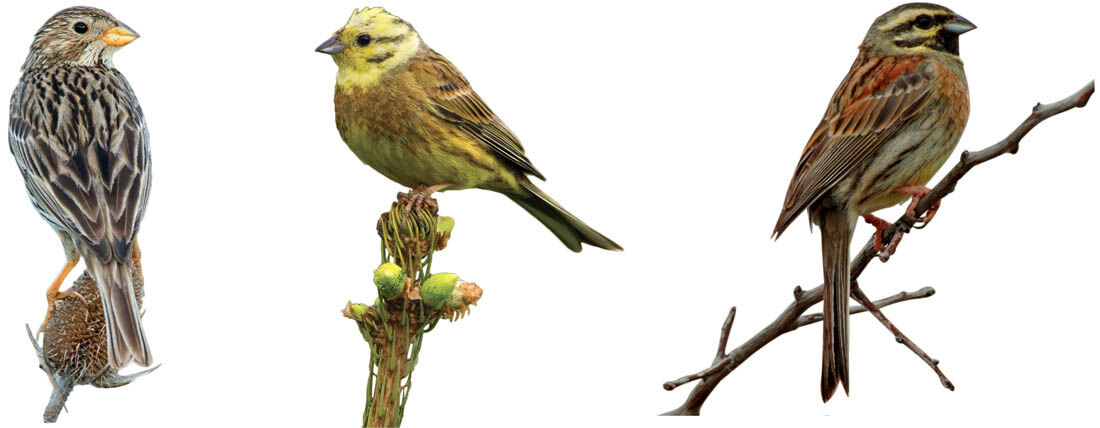
©Do Van Dijck/Minden Pictures/FLPA
©Erica Olsen/FLPA
©Richard Brooks/FLPA
The corn bunting, yellowhammer and cirl bunting have all suffered in recent years from modern farming methods.
Buntings are, in some ways, the Cinderellas of seed-eating birds. They are neither as colourful as the finches, nor as ubiquitous as the sparrows, and we rarely see them unless we are looking specifically for them. This is partly because, until recently, they were mainly birds of the open countryside, but they have also suffered from changes in the way the countryside is farmed.
Five species of bunting breed in Britain: the corn bunting, cirl bunting and yellowhammer, all found mainly on lowland farms; the reed bunting, found in wetland habitats in the breeding season, and farms and gardens in autumn and winter; and our rarest, the snow bunting, found on the high tops of the Cairngorm mountains in summer and in flocks along our coasts in winter.
All five species are, sadly, giving cause for concern: the three farmland species are on the Red List, while the other two are on the Amber List. The corn bunting and yellowhammer really have seen their populations nose-dive. Once found throughout lowland Britain, they have disappeared from many of their former haunts. This is due mainly to the loss of breeding habitat and winter stubble fields caused by modern farming methods, which need to extract the maximum possible yield from fields all year round. The cirl bunting, a shy relative of the yellowhammer, once almost became extinct as a British breeding bird, but, thanks to the RSPB and farmers in its south Devon stronghold, it is now making a comeback.
Telling male buntings apart is reasonably easy, but females and youngsters can be puzzling – they are classic ‘little brown jobs’! The corn bunting is one of our largest songbirds: bulky and fat, with a streaky plumage, a large head and bill, and a characteristic way of dangling its legs when it flies. It may be a fairly dull-looking bird, but the corn bunting has some extraordinary breeding habits. The males will defend a large territory, supporting several females, a strategy known as ‘polygyny’.
The yellowhammer (its name comes from the German word for bunting) is easy to identify in breeding plumage: the male’s custard-yellow head is very striking; and the same is true for the male reed bunting, with its very obvious black and white head pattern. Females are trickier: yellowhammers can look quite brown, while a female reed bunting is superficially like a sparrow, but streakier, especially on her head. Both male and female reed buntings also show white outer tail feathers as they fly away from you! Cirl buntings look a bit like a bird designed by a committee: the body is streaky brown like a dunnock, while the head is black and yellow, similar to that of a yellowhammer but with a greenish tinge.
Song is a good way to tell the three commoner British buntings apart: the corn bunting sounds exactly like someone rattling a bunch of keys; the yellowhammer sings the famous mnemonic ‘a-little-bit-of-bread-and-no-cheeeeese’; while the reed bunting makes a rather pathetic sound, sometimes rendered as ‘pick-my-liquorice’, though it also sounds something like a bored sound engineer, continually repeating the mantra of ‘testing… one… two… testing’.
Both yellowhammers and reed buntings now regularly come to bird tables, especially in rural areas or where there is arable farmland or a wetland nearby. This has helped them maintain their numbers at a time when the wider countryside can no longer provide the food they need, and also brought a touch of the exotic among the usual tits, finches and sparrows.
The odd man out of our buntings is the snow bunting. It doesn’t really belong in Britain, as it is adapted to living in the far north, and is the only small bird to spend the winter months in the Arctic. Nevertheless, a few pairs nest each summer in snow-covered parts of the Scottish Highlands, while in winter little flocks can sometimes be seen along our east coasts. In flight, they are very easy to identify – like a flock of snowflakes scattering through the air!

©Marcel van Kammen/Minden Pictures/FLPA
The male reed bunting is one of our most handsome breeding birds.
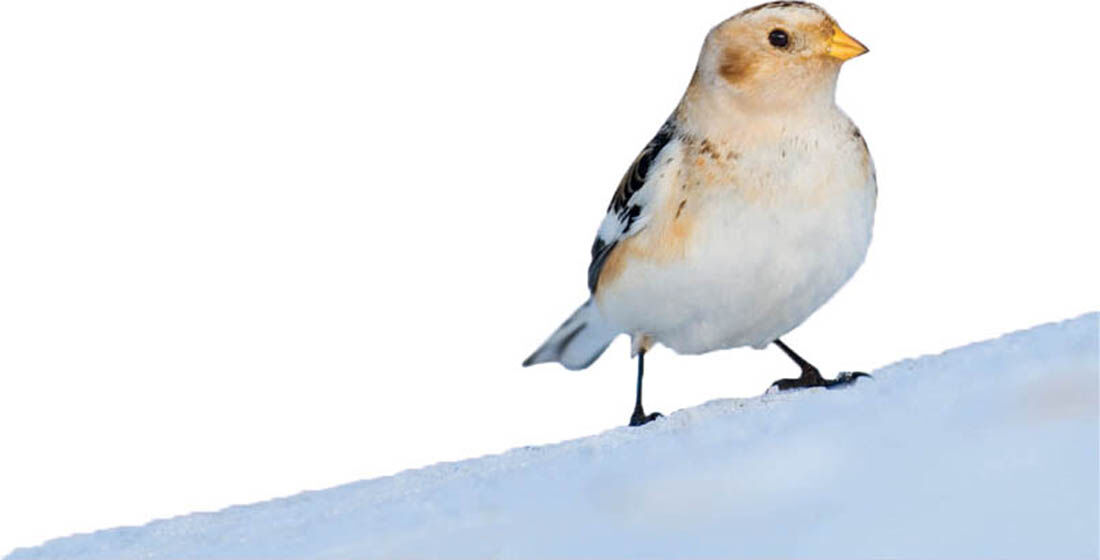
©Andrew Parkinson/FLPA
The snow bunting is one of the toughest birds on the planet.
Blackbird, Song Thrush & Mistle Thrush
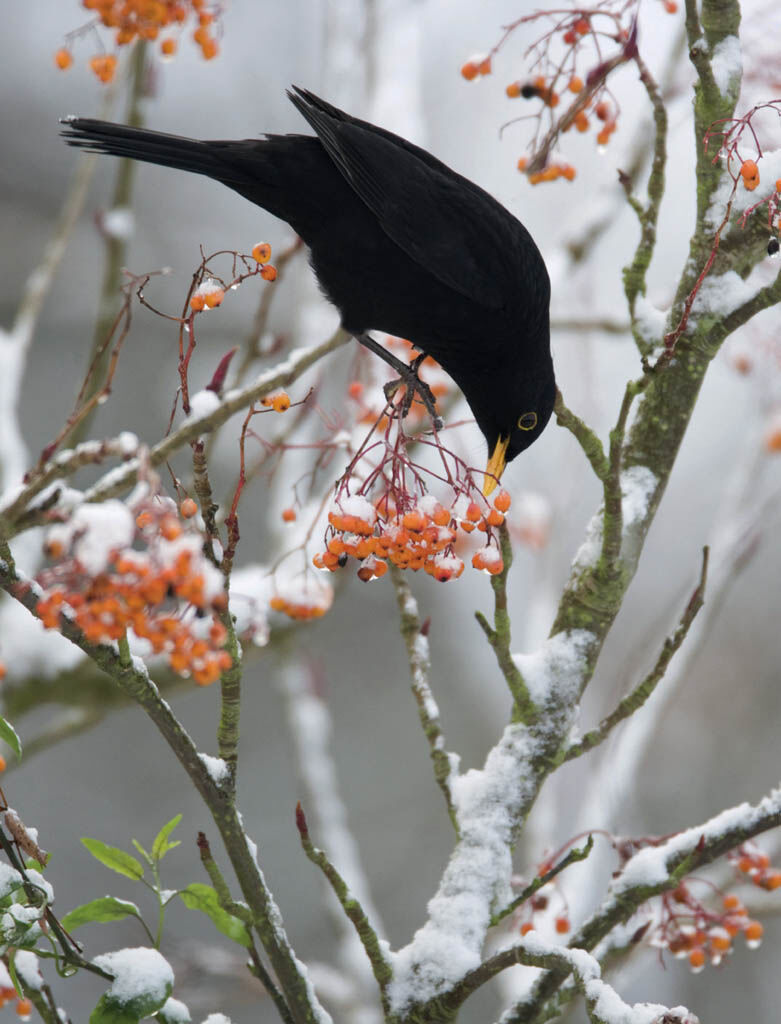
©Bill Coster/FLPA
Blackbirds often feed on berry bushes in winter to supplement their energy needs.
These are three of our most familiar birds, with distinctive and well-loved songs: the blackbird and song thrush regularly top the hit parade of Britain’s favourite songsters. All three are resident, though numbers are supplemented each autumn and winter with new arrivals from across the North Sea, taking advantage of our milder climate. All three are also well adapted to gardens, though the mistle thrush is also commonly found in more open countryside and parkland, with tall trees from which it can deliver its song.
Indeed, the mistle thrush is often one of the first songbirds to sing, at the start of the new year – even earlier during mild winters. Thomas Hardy wrote a famous poem, The Darkling Thrush, which celebrates a thrush singing during blustery weather on New Year’s Eve; many people think that this early date and the bad weather point to this being a mistle, rather than a song, thrush. Mistle thrushes have earned the folk name ‘stormcock’ for their habit of singing through the worst of the British weather.
The song thrush is usually the next of the trio to sing, usually starting off in January or early February. Its song is probably the most distinctive of all our birds: measured phrases, repeated in twos or threes, as if the bird were talking to you! Soon afterwards the blackbird joins in, deeper than the song thrush, with a really fluty tone.


